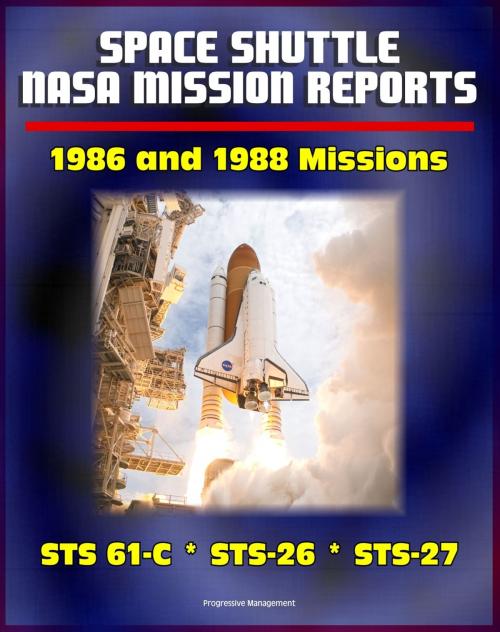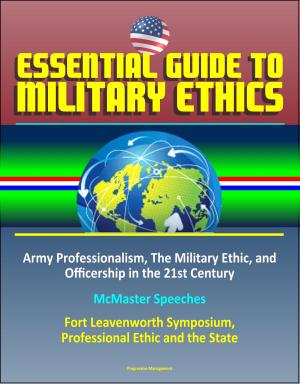Space Shuttle NASA Mission Reports: 1986 and 1988 Missions, STS 61-C, STS-26, STS-27
Nonfiction, Science & Nature, Science, Physics, Astronomy, Other Sciences, History| Author: | Progressive Management | ISBN: | 9781465760814 |
| Publisher: | Progressive Management | Publication: | January 3, 2012 |
| Imprint: | Smashwords Edition | Language: | English |
| Author: | Progressive Management |
| ISBN: | 9781465760814 |
| Publisher: | Progressive Management |
| Publication: | January 3, 2012 |
| Imprint: | Smashwords Edition |
| Language: | English |
These official final program mission reports issued by the NASA Johnson Space Center cover missions in 1986 and 1988: STS 61-C, STS-26, and STS-27. For obvious reasons, a mission report was not issued for Challenger's final mission 51-L on January 28, 1986.
In these thorough reports, with information and specifics not available on NASA website mission descriptions, each orbiter system is reviewed in detail along with technical information on performance and anomalies.
STS 61-C: The major objectives of this flight were to successfully deploy the SATCOM KU-2/Payload Assist Module-Delta Class (PAM-D II) and SYNCOM IV-5/UNQ satellites and to perform the planned operations of the Material Science Laboratory-2 (MSL-2). An option was maintained to fly the Getaway Special (GAS) Bridge Assembly (GBA) and the Hitchhiker G-l (HG-1) to replace the SYNCOM, if it was not ready for flight. This option was exercised since the SYNCOM-IV-5/UNQ did not fly during STS 61-C. The crew for this twenty-fourth Space Shuttle mission were Robert L. Gibson, Commander, U. S. Navy, Commander; Charles F. Bolden, Lt. Col., U. S. Air Force, Pilot; Franklin R. Chang-Dias, Ph. D., Steven A. Hawley, Ph. D., and George D. Nelson, Ph. D., Mission Specialists; Robert J. Cenker and William Nelson, Payload Specialists. Mr. Robert J. Cenker is a representative of the Radio Corporation of American (RCA). Mr. William Nelson is a member of the U. S. House of Representatives.
STS-26: The primary objectives of the STS-26 mission, the first flight following the Challenger accident, were to successfully deploy the Tracking and Data Relay Satellite-C/Inertial Upper Stage (TDRS-C/IUS); to perform all operations necessary to support the requirements of the Orbiter experiment (OEX) Autonomous Supporting Instrumentation System (OASIS) payload; and to conduct operations of the 11 middeck payloads. The crew for this twenty-sixth mission of the Space Shuttle Program was Frederick H. Hauck, Capt., U. S. Navy, Commander; Richard O. Covey, Col., U. S. Air Force, Pilot; and John M. Lounge, George Nelson, Ph.D., and David C. Hilmers, Lt. Col., U. S. Air Force, Mission Specialists.
STS-27: The Space Shuttle vehicle was successfully launched from Launch Complex 39B at the Kennedy Space Center (KSC) on December 2, 1988, with solid rocket booster (SRB) ignition occurring at 337:14:30:33.987 G.m.t. (08:30:33.987 a.m.c.s.t.). Data indicate that all subsystems performed satisfactorily. The crew for this twenty-seventh flight of the Space Shuttle were Robert L. Gibson, Commander; Guy S. Gardner, Pilot; and Richard M. Mullane, Jerry L. Ross, and William M. Shepard, Mission Specialists.
These official final program mission reports issued by the NASA Johnson Space Center cover missions in 1986 and 1988: STS 61-C, STS-26, and STS-27. For obvious reasons, a mission report was not issued for Challenger's final mission 51-L on January 28, 1986.
In these thorough reports, with information and specifics not available on NASA website mission descriptions, each orbiter system is reviewed in detail along with technical information on performance and anomalies.
STS 61-C: The major objectives of this flight were to successfully deploy the SATCOM KU-2/Payload Assist Module-Delta Class (PAM-D II) and SYNCOM IV-5/UNQ satellites and to perform the planned operations of the Material Science Laboratory-2 (MSL-2). An option was maintained to fly the Getaway Special (GAS) Bridge Assembly (GBA) and the Hitchhiker G-l (HG-1) to replace the SYNCOM, if it was not ready for flight. This option was exercised since the SYNCOM-IV-5/UNQ did not fly during STS 61-C. The crew for this twenty-fourth Space Shuttle mission were Robert L. Gibson, Commander, U. S. Navy, Commander; Charles F. Bolden, Lt. Col., U. S. Air Force, Pilot; Franklin R. Chang-Dias, Ph. D., Steven A. Hawley, Ph. D., and George D. Nelson, Ph. D., Mission Specialists; Robert J. Cenker and William Nelson, Payload Specialists. Mr. Robert J. Cenker is a representative of the Radio Corporation of American (RCA). Mr. William Nelson is a member of the U. S. House of Representatives.
STS-26: The primary objectives of the STS-26 mission, the first flight following the Challenger accident, were to successfully deploy the Tracking and Data Relay Satellite-C/Inertial Upper Stage (TDRS-C/IUS); to perform all operations necessary to support the requirements of the Orbiter experiment (OEX) Autonomous Supporting Instrumentation System (OASIS) payload; and to conduct operations of the 11 middeck payloads. The crew for this twenty-sixth mission of the Space Shuttle Program was Frederick H. Hauck, Capt., U. S. Navy, Commander; Richard O. Covey, Col., U. S. Air Force, Pilot; and John M. Lounge, George Nelson, Ph.D., and David C. Hilmers, Lt. Col., U. S. Air Force, Mission Specialists.
STS-27: The Space Shuttle vehicle was successfully launched from Launch Complex 39B at the Kennedy Space Center (KSC) on December 2, 1988, with solid rocket booster (SRB) ignition occurring at 337:14:30:33.987 G.m.t. (08:30:33.987 a.m.c.s.t.). Data indicate that all subsystems performed satisfactorily. The crew for this twenty-seventh flight of the Space Shuttle were Robert L. Gibson, Commander; Guy S. Gardner, Pilot; and Richard M. Mullane, Jerry L. Ross, and William M. Shepard, Mission Specialists.















